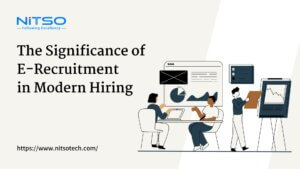Attracting and hiring top talent is critical for organizational success. Yet many companies fail to realize the importance of well-crafted, standardized job descriptions in the recruitment process. Generic, inconsistent, or poorly formatted job postings create confusion, hamper candidate searches, and ultimately diminish hiring outcomes.
Implementing a structured job description format lays the foundation for sourcing qualified applicants, simplifying screening, improving hiring efficiency, and ensuring candidates are the right match for open roles. Standardized descriptions provide clarity for both employers and applicants while enabling streamlined workflows.
In this article, we will explore the components of an effective job description, its impact on the hiring process, the role of HR technology, and the risks of not using a standardized approach. You will learn tangible tips and best practices for writing clear, appealing, and optimized job postings. Consistent and thoughtfully crafted job descriptions should be the cornerstone of any hiring strategy.
Table of Contents
Key Components of a Well-Structured Job Description
A well-written, standardized job description is crucial for attracting qualified candidates, facilitating the hiring process, and ensuring a good fit between the employer and employee. The key components of an effective job description include:
- Job Title: The job title should be specific and descriptive. Generic titles like “engineer” or “manager” are too broad. Include critical details like level (“Senior Software Engineer”), speciality (“ICU Nurse”), or function (“Marketing Coordinator”).
- Department and Location: Identifying the department, business unit, and office location provides key context right up front. This helps candidates self-screen for fit.
- Summary: A short introductory paragraph that summarizes the overall role. This gives a high-level overview of the job’s core purpose.
- Duties and Responsibilities: Use bullet points to break down the day-to-day duties and responsibilities of the role. Be as specific as possible. Order these from most important to peripheral functions.
- Qualifications and Skills: List required competencies like specialized skills, education, certifications, and previous work experience. Include soft skills like communication, teamwork, and problem-solving.
- Education and Experience: Specify minimum or preferred academic credentials and years of experience. Explain specifically how related experience should be demonstrated.
Following this standardized structure and including critical details ensures your job description format covers all the bases. It provides clarity for applicants while allowing for easy candidate screening and comparison.
Impact on Attracting Candidates and Streamlining Hiring
The use of clear job description formats has a strong influence on the candidate pipeline and dramatically improves hiring efficiency. The outlined benefits lead to massive time and cost savings in talent acquisition. It results in hiring qualified candidates in less time.
1. Streamlined Candidate Search and Application
- Standardized formatting allows candidates to quickly scan for fit versus reading verbose paragraphs.
- Important details like job title, required skills, and qualifications are easily identified.
- Applicants can self-screen and determine if they should apply.
- Keyword optimization ensures job posts are surfaced in relevant candidate searches.
2. Simplified Screening and Comparison
- HR can create screening criteria based on required qualifications.
- Quickly filter applications that do not meet minimum requirements.
- Compare candidates using consistent evaluation metrics.
- Evaluate technical skills, expertise, and experience in a benchmarked way.
- Reduce unconscious bias by focusing evaluations on outlined criteria.
3. Reduced Time-to-Hire
- HR does not have to rewrite or reformat job descriptions for each opening.
- Reposting openings is simple using templated descriptions.
- Interviews stay focused on the most critical requirements and competencies.
- Structured interviews using standardized criteria.
- Speeds up the hiring process and allows the filling of openings faster.
Ensuring a Good Job-Person Fit
An essential goal of talent recruitment is matching the right people to the right roles. Well-crafted, standardized job descriptions are invaluable for establishing role expectations and evaluating candidate fit. Here’s how they set up applicants and employers for success:
1. Sets Expectations for Qualified Applicants
- Clearly outlines day-to-day duties and responsibilities.
- No surprises about the core functions and key objectives.
- Gives a realistic preview of required competencies and qualifications.
- Allows self-assessment of fit based on skills, experience, and interests.
2. Enables Candidate Compatibility Assessment
- Provides a structured way to assess candidate resumes and backgrounds.
- Can objectively evaluate interpersonal abilities based on criteria.
- Makes comparing technical capabilities easier with consistent data points.
- Reduces subjective or biased perceptions of applicant suitability.
3. Reduces Employee Turnover
- Candidates have a clear understanding of the role before accepting.
- New hires start with realistic expectations, leading to greater engagement.
- The structured interview process surfaces any mismatches earlier.
- Better job satisfaction from closer person-job fit.
In summary, job description formats give both applicants and employers the insights needed to make an informed match. This leads to higher long-term job satisfaction and employee retention.
The Role of Technology and Software
Advancements in HR technology and recruitment software have increased the ease and effectiveness of using standardized job descriptions. Here’s how modern tools facilitate optimized hiring processes:
1. Applicant Tracking Systems
- Provide templates to create consistent and thorough job descriptions.
- Enable easy formatting adjustments while retaining core components.
- Streamline promotion across multiple online job boards.
- Post jobs in a centralized database accessible to candidates.
2. Talent Management Software
- Automate job description creation using pre-defined templates.
- Store descriptions in centralized, searchable databases.
- Simple to reuse and replicate for open positions.
- Ability to tweak for speciality roles while maintaining consistency.
3. Keyword Optimization
- Analysis tools identify top keywords and phrases to include.
- Ensures job descriptions are discoverable in candidate searches.
- Surfaces postings on relevant job sites and talent databases.
- Connects with more qualified, interested applicants.
In summary, technology is critical for the efficient development, distribution, and promotion of standardized job descriptions. The right HR tools allow organizations to reap the full benefits of consistency, clarity, and structure in their hiring processes.
The Risks of Non-Standardized Job Description Formats
While a standardized job description format offers many benefits, not taking the time to craft structured, consistent role descriptions poses multiple risks:
1. Applicant Confusion
- Vague, unorganized descriptions create confusion about core functions.
- Lack of details on critical competencies needed for success.
- Candidates are unsure if they are qualified for the role.
2. Inability to Compare Candidates
- No structured process to screen applicants without criteria.
- No benchmarking framework to evaluate candidates equally.
- Difficulty identifying the most qualified applicants.
3. Increased Hiring Effort
- HR needs to rewrite descriptions for each opening.
- Cannot reuse or replicate previous job descriptions.
- No templates to streamline promotion across job boards.
4. Higher Costs
- Increased employee turnover from poor job-person fit leads to high replacement costs for organizations.
- Lost productivity training new hires with mismatched skills.
- More time and effort are required to fill open positions.
Article you might be intrested in: Best Ways to Support Remaining Employees After Layoffs
Key Takeaways and Conclusion
Crafting standardized job descriptions should be a priority for any organization looking to improve hiring outcomes. Here are the key takeaways on why consistency and structure in job description formats matter:
- Provides clarity to help attract qualified, interested applicants.
- Streamlines screening and comparison to identify the best candidates.
- Reduces time-to-hire through optimized recruitment workflow.
- Ensures closer job-person fit leading to higher retention.
- Enables effective use of HR technology for hiring efficiency.
In conclusion, developing clear, structured job descriptions has a tremendously positive impact on talent recruitment. The benefits for both employers and applicants make it well worth investing the time and effort to standardize descriptions. Leveraging templates and workforce technology optimizes the hiring process and matches the right people to the right roles. Consistent and well-formatted job descriptions should be a core component of any organization’s recruitment strategy.








0 Comments